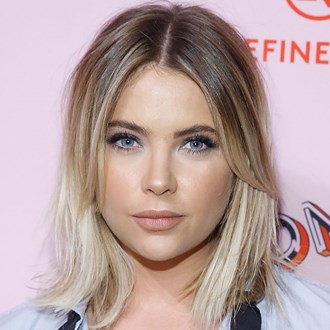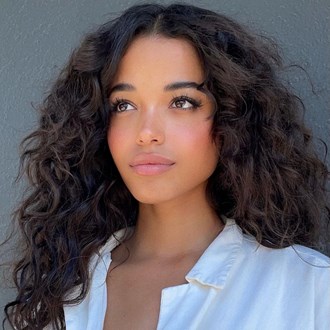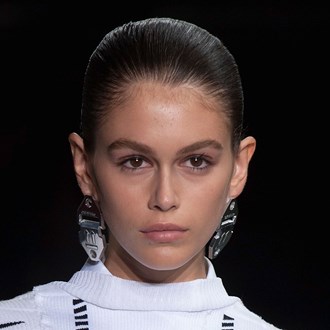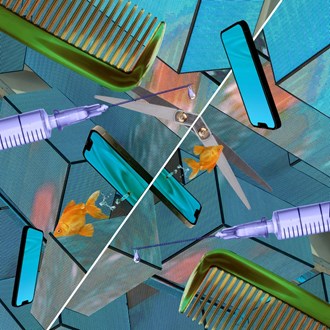How to apply concealer the right way

Say see ya later to spots, pigmentation and dark circles
You know the feeling when you try to cover up a pimple with concealer, but then it ends up looking like a flaky, dried-out mess? Or when you think you’ve done a good job at disguising your dark circles, only for them to re-appear under the florescent lights at work? Yep. The concealing game is HARD.
What makes it even harder is that there are a zillion different makeup tutorials out there showing a zillion different ways to apply concealer. So, how’s a gal to know what method is right? On top of that, different types of concealers do different things – like, a concealer that covers dark circles isn’t going to do a great job of covering pimples. Sigh.
To clear things up, we spoke with Alphie Sadsad, makeup artist and National Artistry Lead of Sephora Australia, for his top tips on how to hide pimples, dark circles, and pigmentation with concealer.
1
Dark circles
Dark circles are fickle little beasts. They have a knack for popping out under even the heaviest of full coverage concealers. And there’s nothing worse than looking in the bathroom mirror at lunch to find those two black marks under your eyes need a touch-up already. But according to Sadsad, all it takes is a bit of skin prep and the right technique to cover them like a pro.
“When wanting to cover dark circles, concealer should be one of your last steps. I would always start by prepping the eye area with a brightening eye cream – my go-to would be the Inkey List Caffeine Under Eye Serum,” reveals Sadsad. We also like La Roche-Posay Pigmentclar for Eye Anti-Ageing Cream.
“Then, if your dark circles are faint, you can go straight in with your concealer. However, if you do need a little extra help, I’d first use a corrector like Becca’s Under Eye Brightening Corrector. The best thing about using a brightening corrector is that it will cancel out blue and purple tones which will help to prevent your concealer from looking grey and ashy. If your under-eye circles are reddish, then a green-based corrector will work best, and for blue or green circles, yellow or red [colour-correcting concealers] will do the trick,” he says.
So, to recap: “Start with clean skin and apply a small amount of eye cream on your ring finger and pat around the orbital bone, making sure that the eye cream is plump, not slippery wet”. If required, you can apply a colour corrector to your under-eyes, patting lightly with your ring finger until the edges are blended and the darkness has disappeared. Finally, the concealer step! “The best way to apply your concealer would be using the warmth of your fingers to melt the product into your skin.
Place over the top [of dark circles] and tap to blend. Pat powder to set using a small fluffy brush. Try Cover FX Perfect Setting Powder and Sephora Collection Pro Brush Precision Crease Shadow in #17."
Another important tip for perfecting the finish? Make sure you’re using the right shade. When it comes to choosing an under-eye concealer, Sadsad says to ensure flawless coverage, find a concealer that is one to two shades lighter than your foundation. "You want your under-eye concealer to slightly brighten, but still be seamless with the rest of your foundation,” he explains. In terms of the formula, you’re going to want to opt for a radiant creamy concealer that is both parts hydrating and light-reflecting. Avoid formulas with drying textures (like concealers with a matte finish), because these can settle into fine lines and make you look even more tired.
Try: Tarte Shape Tape, Make Up Forever Ultra HD Light Capturing Self-Setting Concealer or Maybelline New York Instant Age Rewind Multi-Use Concealer
2
Pimples
If you're someone with an acne-prone skin type, you'll know the struggle of covering spots all too well. Especially if you just squeezed them. Hey, it happens – but just remember, a gnarly pimple scab is going to be way harder to hide (not to mention it can also result in acne scarring). Instead of popping the pimple, focus on promoting healing first in order to avoid cakey, dry skin. “As tempting as it can be, it’s important to make sure you’re looking after your skin and allowing your pimple to heal – as opposed to only covering it up,” says Sadsad. “I like to use the Votary Blemish Rescue Oil, which is a purifying oil that works to treat breakouts, without drying out your skin – so not a crusty blemish in sight!”
As for actually covering your spot, while it may be tempting to stack as much concealer on top of your pimple as possible, remember that sometimes less is more. “Covering with lots of product can often make breakouts more obvious and slow down the healing process, that’s why I like to use a treatment concealer like IT Cosmetics Bye Bye Breakout Full Treatment Concealer, because it not only provides coverage but treats the skin at the same time.” If you're looking for a non-liquid concealer, we like Genie Full Coverage Line-Smoothing Concealer; it contains ultra-nourishing ingredients like hyaluronic acid and vitamin E, meaning it won't dry your spot out.
Along with prioritising healing your breakouts, Sadsad says it’s also best to avoid any concealers that are marketed as “brightening” or “highlighting”, as these often contain light reflectors that can draw attention to the blemish, rather than helping to flatten the area. “This is why I like to have two types of concealer in my makeup bag - one specifically for brightening the under-eye and the other the same shade as your foundation for covering blemishes,” he says. Note. Taken.
3
Pigmentation
If your classic concealer just isn’t cutting it when it comes to dark spots and pigmentation, Sadsad recommends swapping it for a colour corrector. “For fair-to-medium skins, use a peachy shade and orange for deeper skin tones. The colour corrector will work to balance out the colour in the pigmentation, making it easier to cover with your foundation or concealer,” says Sadsad. If you're looking for a colour correcting concealer, we like Estée Lauder Double Wear Custom Colour Correctors.
“I like to use a Beautyblender sponge to blend the corrector into the skin first, and then follow with concealer and or foundation over the top," explains Sadsad. “Additionally, if your pigmentation is located in your cheek area, be wary of using too much bronzer or blush with brown undertones, as this may enhance your pigmentation.”
Pro tip: If your concealer looks like it needs a bit of a retouch during the day, Sadsad says a product like Yves Saint Laurent Touche Éclat Face Highlighter Pen is perfect for applying over makeup to lift and brighten.
Looking for the best concealers to cover dark circles? Check out some of the best under-eye concealers in Australia (including drugstore goodies!). Plus, find out the beauty products that will help banish tired eyes.
What is your Holy Grail concealer? Let us know in the comment section below.
Main image credit: @januaryjones

Erin Docherty is a Beauty Writer for BEAUTYcrew, Beauty Editor for Women's Health magazine and a Grooming Writer for Men's Health magazine. She has a keen interest in cosmeceutical skin care and is currently working on minimising her 9-step skin care routine – because ain’t nobody got time for that. When she’s not writing about the latest beauty news, or applying copious amounts of serum, you can find her spending all her money in Sephora.







